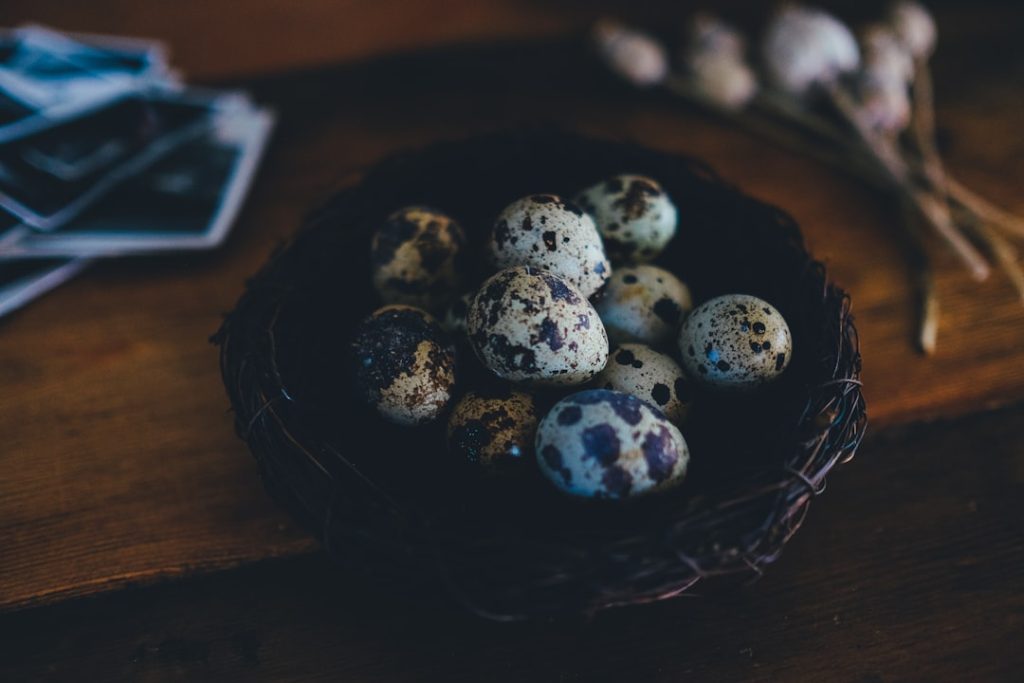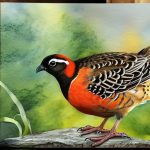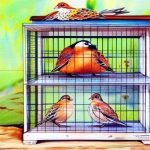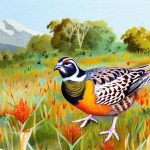Harlequin quail, also known as Chinese painted quail, are small, colorful birds that are popular among aviculturists for their beauty and relatively easy care. Breeding these quails can be a rewarding and enjoyable experience for bird enthusiasts. Harlequin quails are known for their vibrant plumage, which includes a variety of colors such as blue, brown, and white. They are also known for their distinctive call, which adds to their charm. Breeding these quails requires careful attention to their needs and behaviors, but with the right knowledge and preparation, it can be a successful endeavor.
Breeding harlequin quails can be a fascinating hobby for those interested in aviculture. These birds are relatively easy to care for and can be bred in captivity with the right conditions. Understanding their breeding habits, selecting the right breeding stock, setting up appropriate breeding enclosures, and managing the breeding process are all essential aspects of successful harlequin quail breeding. In this article, we will explore the various aspects of breeding harlequin quails, from selecting breeding stock to caring for chicks, and managing breeding challenges. By understanding these key elements, aviculturists can successfully breed and raise healthy harlequin quails.
Table of Contents
Key Takeaways
- Harlequin quail breeding can be a rewarding hobby and a potential source of income.
- Select breeding stock with good health, strong genetics, and desirable traits.
- Provide breeding enclosures with proper space, nesting materials, and environmental conditions.
- Monitor breeding and incubation process closely for successful hatching and chick development.
- Care for chicks by providing warmth, proper nutrition, and a clean environment to ensure their health and growth.
Selecting Breeding Stock
Selecting the right breeding stock is crucial for successful harlequin quail breeding. When choosing breeding stock, it is important to select healthy, mature birds with vibrant plumage and good genetic traits. Look for birds that are active, alert, and free from any signs of illness or deformities. It is also important to consider the genetic diversity of the breeding stock to avoid inbreeding and maintain the overall health and vitality of the offspring.
When selecting breeding stock, it is also important to consider the birds’ temperament and compatibility. Harlequin quails are social birds and thrive in pairs or small groups, so it is important to observe their interactions and choose compatible pairs for breeding. Additionally, consider the birds’ reproductive history and fertility to ensure successful breeding outcomes. By carefully selecting breeding stock based on health, genetic diversity, temperament, and reproductive history, aviculturists can lay the foundation for successful harlequin quail breeding.
Setting Up Breeding Enclosures
Creating suitable breeding enclosures is essential for successful harlequin quail breeding. Breeding enclosures should provide a safe and comfortable environment for the birds to engage in natural breeding behaviors. The size of the enclosure will depend on the number of birds being housed, but it should be spacious enough to allow for natural movement and nesting behaviors. Additionally, the enclosure should be equipped with appropriate nesting materials such as grass hay or shredded paper to provide a comfortable nesting environment for the birds.
It is also important to provide suitable lighting and temperature conditions within the breeding enclosures. Harlequin quails require a consistent photoperiod to stimulate natural breeding behaviors, so it is important to provide 14-16 hours of light per day to mimic their natural breeding season. Additionally, maintaining a stable temperature between 65-75 degrees Fahrenheit is crucial for successful breeding outcomes. By creating well-equipped breeding enclosures with appropriate nesting materials, lighting, and temperature conditions, aviculturists can provide an ideal environment for harlequin quail breeding.
Breeding and Incubation Process
The breeding and incubation process is a critical stage in harlequin quail breeding. Once the breeding stock has been selected and suitable breeding enclosures have been set up, it is important to observe the birds’ behavior for signs of courtship and mating. Male harlequin quails will often display courtship behaviors such as strutting and vocalizations to attract females. Once mating has occurred, females will begin laying eggs in the nesting materials provided within the enclosure.
After the eggs have been laid, it is important to monitor them closely for signs of fertility and development. Fertile eggs will appear opaque and may show signs of embryonic development when candled with a light source. Infertile eggs will remain translucent and show no signs of development. Once fertile eggs have been identified, they can be transferred to an incubator for hatching. The incubation period for harlequin quail eggs is approximately 16-18 days, during which time it is important to maintain stable temperature and humidity levels within the incubator. By carefully monitoring the breeding and incubation process, aviculturists can increase the likelihood of successful hatching and healthy chick development.
Caring for Chicks
Caring for harlequin quail chicks requires careful attention to their nutritional and environmental needs. Once the chicks have hatched, they should be kept in a warm brooder with access to food and water. It is important to provide a balanced diet for the chicks, including commercial game bird starter feed supplemented with finely ground chick grit for digestion. Additionally, providing a source of heat such as a heat lamp or heating pad is crucial to maintain the chicks’ body temperature during the early stages of development.
As the chicks grow, it is important to monitor their health and development closely. Ensure that they have access to clean water at all times and provide appropriate space for natural movement and exercise. Additionally, observe their behavior for signs of illness or distress and seek veterinary care if necessary. By providing a nurturing environment with proper nutrition, warmth, and care, aviculturists can raise healthy harlequin quail chicks to maturity.
Managing Breeding Challenges
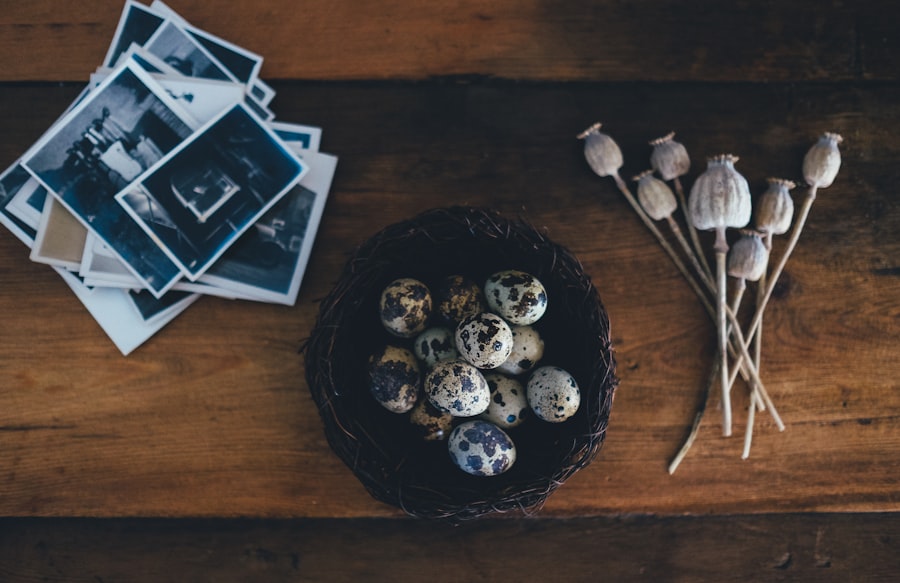
Breeding harlequin quails may present various challenges that aviculturists should be prepared to address. One common challenge is infertility or low hatch rates, which may be caused by factors such as inadequate nutrition, poor breeding stock selection, or environmental stressors. To address this challenge, it is important to ensure that breeding stock receives a balanced diet with appropriate nutrients and supplements to support reproductive health. Additionally, consider evaluating the genetic diversity of the breeding stock and providing a stress-free environment to promote successful breeding outcomes.
Another challenge in harlequin quail breeding is managing aggressive behavior between mating pairs or groups. Aggression may occur during courtship or mating rituals and can lead to injury or stress among the birds. To manage this challenge, observe the birds’ behavior closely and separate aggressive individuals if necessary. Providing ample space within the breeding enclosures and minimizing environmental stressors can also help reduce aggressive behavior among mating pairs or groups.
Conclusion and Future Breeding Plans
In conclusion, breeding harlequin quails can be a rewarding experience for aviculturists who are passionate about these colorful and charming birds. By understanding the key aspects of harlequin quail breeding, including selecting breeding stock, setting up suitable breeding enclosures, managing the breeding process, and caring for chicks, aviculturists can increase their likelihood of successful breeding outcomes. While challenges may arise during the breeding process, careful observation, proactive management, and proper care can help overcome these obstacles.
For future breeding plans, aviculturists may consider expanding their breeding program to introduce new genetic lines or produce specific color variations within the harlequin quail population. Additionally, sharing knowledge and experiences with other aviculturists can contribute to the collective understanding of harlequin quail breeding practices and contribute to the overall health and vitality of captive populations. By continuing to learn and adapt best practices in harlequin quail breeding, aviculturists can contribute to the conservation and appreciation of these beautiful birds for generations to come.
If you’re interested in breeding harlequin quail, you might also want to consider the housing requirements for your poultry. Poultry Wizard has a helpful article on large chicken coop ideas that could provide valuable insights into creating a suitable environment for your quail. Check it out here.
FAQs
What is a harlequin quail?
The harlequin quail, also known as the Chinese painted quail, is a small ground-dwelling bird native to Southeast Asia. It is popular in aviculture due to its colorful plumage and small size.
How do you breed harlequin quail?
Breeding harlequin quail involves providing a suitable breeding environment with proper nesting materials, a balanced diet, and ensuring the birds are healthy and stress-free. Breeding pairs should be kept in a quiet and undisturbed area to encourage nesting and egg-laying.
What do harlequin quail eat?
Harlequin quail are omnivorous and eat a diet consisting of seeds, grains, insects, and fresh greens. A balanced diet is important for their health and reproductive success.
How long does it take for harlequin quail eggs to hatch?
Harlequin quail eggs typically take around 16-18 days to hatch once they have been laid. The incubation period may vary slightly depending on temperature and humidity levels.
How many eggs do harlequin quail lay?
A female harlequin quail can lay between 6-12 eggs in a clutch, with each egg being laid approximately one day apart. It is important to provide a suitable nesting area for the eggs to ensure successful incubation.
What is the lifespan of a harlequin quail?
In captivity, harlequin quail can live for 4-6 years with proper care and a suitable environment. Providing a balanced diet, regular veterinary check-ups, and a stress-free environment can contribute to their longevity.
Meet Walter, the feathered-friend fanatic of Florida! Nestled in the sunshine state, Walter struts through life with his feathered companions, clucking his way to happiness. With a coop that’s fancier than a five-star hotel, he’s the Don Juan of the chicken world. When he’s not teaching his hens to do the cha-cha, you’ll find him in a heated debate with his prized rooster, Sir Clucks-a-Lot. Walter’s poultry passion is no yolk; he’s the sunny-side-up guy you never knew you needed in your flock of friends!

